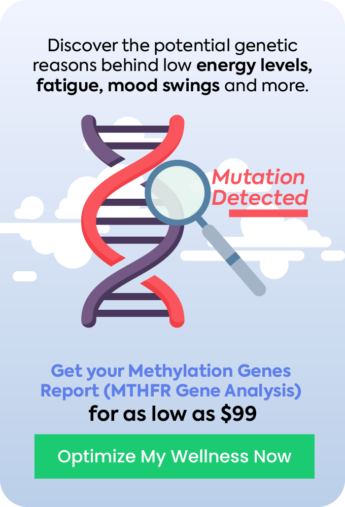Migraine are headache disorders characterized by recurrent, severe headaches often accompanied by other symptoms. They are typically one-sided and have a throbbing or pulsating quality. Migraine attacks can last from a few hours to several days and are often debilitating; impacting daily activities. Besides the headache, migraines are accompanied by sensitivity to light, sound, and smells, as well as nausea and vomiting.
The exact cause of migraines has yet to be fully understood. Researchers believe migraines involve complex interactions between the brain, nerves, and blood vessels. Triggers for migraines can vary widely among individuals. It may include stress, hormonal changes, certain foods, and environmental factors.
Migraines are considered a neurological disorder, and while there is no cure, treatments are available to manage symptoms and reduce the frequency of attacks. These treatments range from lifestyle changes and over-the-counter medications to prescribed drugs and preventive therapies.
Subtypes of Migraine
Migraine with Aura: This type of migraine is preceded or accompanied by sensory disturbances called “aura.” Auras typically last from 20 to 60 minutes. They can involve visual disturbances (like seeing flashing lights, zigzag patterns, or blind spots), sensory changes (such as tingling or numbness, usually in the face or hands), and rarely, difficulties with speech or language. The headache phase follows the aura, which has the typical features of a migraine, such as throbbing pain, usually on one side of the head, sensitivity to light and sound, and nausea.
Migraine Without Aura: This is the more common type of migraine and does not involve any aura phase. It is characterized by a headache that lasts from a few hours to several days, typically involving moderate to severe pain on one side of the head. Nausea, vomiting, and sensitivity to light, sound, or smell often accompany the headache. The absence of the aura phase differentiates this type from the migraine with aura.
Can Migraines Be Genetic?
Susceptibility to migraines can be genetic. Research indicates that migraines run in families, suggesting a hereditary component. If one or both parents suffer from migraines, their children are more likely to experience them as well. A 2021 twin study using data from the Swedish Twin Registry examined the genetic and environmental factors contributing to the sex differences in migraine prevalence, where women are significantly more affected than men. The study found that while migraine is equally heritable in both sexes, subtle differences in the underlying genetic component between men and women were noted. Additionally, females with a male co-twin were at a higher risk of migraines, suggesting that exposure to a masculinized prenatal environment may increase the risk of developing migraines in females.
A 2011 genome-wide association study (GWAS) involving European migraine patients identified SNP rs1835740 on chromosome 8q22.1 as significantly associated with migraine. This finding was replicated in additional cases, making the presence of a minor allele of rs1835740 the first established genetic risk factor for migraine. This genetic variant is located near genes involved in glutamate regulation and astrocyte function.
A more recent 2017 meta-analysis of 375,000 individuals identified several genes with variants linked to migraine through 38 genomic loci. Prominent genes involved include:
- PHACTR1 – Associated with both migraine and Cervical Artery Dissection, highlighting a shared genetic component between these conditions.
- KCNK5 and TRPM8 – Known ion channel proteins linked to migraine, supporting the hypothesis of migraine as a channelopathy.
- SLC24A3, ITPK1, and GJA1 – Genes related to ion homeostasis that may play a role in migraine susceptibility.
- REST, GJA1, YAP1, PRDM16, LRP1, and MRVI1 – Genes linked to oxidative stress and nitric oxide (NO) signaling, likely involved in migraine pathogenesis.
These genes are implicated in vascular and smooth muscle function, ion homeostasis, and oxidative stress, contributing to the complex mechanisms underlying migraine.
A 2022 genome-wide association study involving over 100,000 migraine cases and 770,000 controls identified 123 genetic loci associated with migraine, 86 of which were previously unknown. These findings highlight both shared and distinct genetic components for the two main migraine subtypes: with aura and without aura. Specific risk variants were identified for each subtype, while others increased susceptibility across both. The study also found that migraine-associated variants are enriched in genes related to neurovascular mechanisms, supporting the role of these pathways in migraine pathophysiology and pointing to potential new drug targets.
Genetic Testing for Migraine
Genetic testing for migraines is an emerging area of research. It is yet to be widely available as a standard diagnostic tool. Genetic testing helps identify genetic variations that may increase an individual’s susceptibility to migraines. It could lead to more personalized approaches to treatment and prevention. Currently, the genetic factors associated with migraines are not fully understood, and researchers believe the condition results from the interaction of multiple genes and environmental factors.
Some research has identified specific gene variations linked to certain types of migraines, such as familial hemiplegic migraine, a rare form of the disorder. However, the genetic component is more complex and less well-defined for the more common types of migraines. As genomics advances, genetic testing may become a more practical tool for identifying and tailoring treatments to specific genetic makeup.
Managing Migraine During Pregnancy
Migraines during pregnancy can be challenging to manage due to the limitations on medication use. While some women may experience an improvement in their migraine symptoms during pregnancy, others may find that their migraines persist or even worsen. Hormonal changes, particularly fluctuations in estrogen levels, are believed to play a significant role in migraines during pregnancy. These changes can affect the frequency and severity of migraine attacks. For managing migraines during pregnancy, non-pharmacological treatments, such as maintaining a regular sleep schedule, staying hydrated, and managing stress, are recommended.
In some cases, certain medications may be considered safe. However, it is vital to consult a healthcare provider before taking any medication. Understanding the triggers and maintaining a healthy lifestyle can help in managing migraines during pregnancy, minimizing the impact on both the mother and the developing baby.
Can Migraine Make You Dizzy?
Migraines can cause dizziness, a condition often referred to as vestibular migraine or migraine-associated vertigo. Dizziness during a migraine can manifest as unsteadiness, lightheadedness, or a spinning sensation (vertigo). This symptom can occur before, during, or after the headache phase of a migraine attack. Vestibular migraines are less common than typical migraines. However, it can be particularly disabling due to the impact on balance and spatial orientation.
The exact cause of dizziness in migraines is not fully understood. However, researchers believe it to be related to abnormal brain activity affecting the areas responsible for balance and coordination. Like other migraine symptoms, stress, certain foods, or hormonal changes can trigger dizziness. Managing vestibular migraines often involves a combination of lifestyle changes, medications, and, in some cases, vestibular rehabilitation therapy.
Can Migraine Cause Nausea?
Nausea is a common symptom associated with migraines. Many people who experience migraines report feeling nauseous during an attack, and this can sometimes lead to vomiting. During a migraine attack, the brainstem may become sensitized to specific triggers, leading to the sensation of nausea.
This symptom can be particularly distressing and can exacerbate the overall discomfort of a migraine attack. Treating nausea in migraines often involves the use of antiemetic medications, which can help relieve nausea and prevent vomiting. In some cases, managing the migraine itself with appropriate pain relief and preventive strategies can reduce the occurrence of nausea as well.
Can Migraine Cause a Seizure?
While migraines and seizures are distinct neurological conditions, there is some evidence to suggest a link between the two. This phenomenon is called migralepsy, where a seizure occurs either during or shortly after a migraine attack. However, this condition is considered rare. Migraines and seizures may share some common underlying mechanisms, such as abnormal brain activity and changes in neural excitability.
People who experience both migraines and seizures are known to have migraine with aura more often than those who have migraines without aura. In cases where migraines lead to seizures, the treatment approach may need to address both conditions simultaneously, involving a combination of medications that can help prevent both migraines and seizures. It’s important for individuals who experience such symptoms to seek medical advice for proper diagnosis and management.
Takeaway
Migraines are a complex neurological disorder characterized by recurrent, severe headaches often accompanied by symptoms such as sensitivity to light, sound, and nausea. They can be triggered by various factors, including stress, hormonal changes, and certain foods, and may last from a few hours to several days. There are different subtypes, including migraines with and without aura, and they can have a genetic component, with certain genes and their variants linked to migraine susceptibility. While there is no cure, treatments ranging from lifestyle changes to medications can help manage symptoms. Migraines may also lead to other symptoms like dizziness and nausea and, in rare cases, can be associated with seizures. Managing migraines, especially during pregnancy, requires careful consideration of treatment options to minimize risks.
References
- https://www.ncbi.nlm.nih.gov/pmc/articles/PMC8915724/
- https://www.ncbi.nlm.nih.gov/pmc/articles/PMC2948563/
- https://www.ncbi.nlm.nih.gov/pmc/articles/PMC8837554/
- https://www.ncbi.nlm.nih.gov/pmc/articles/PMC7948327/










